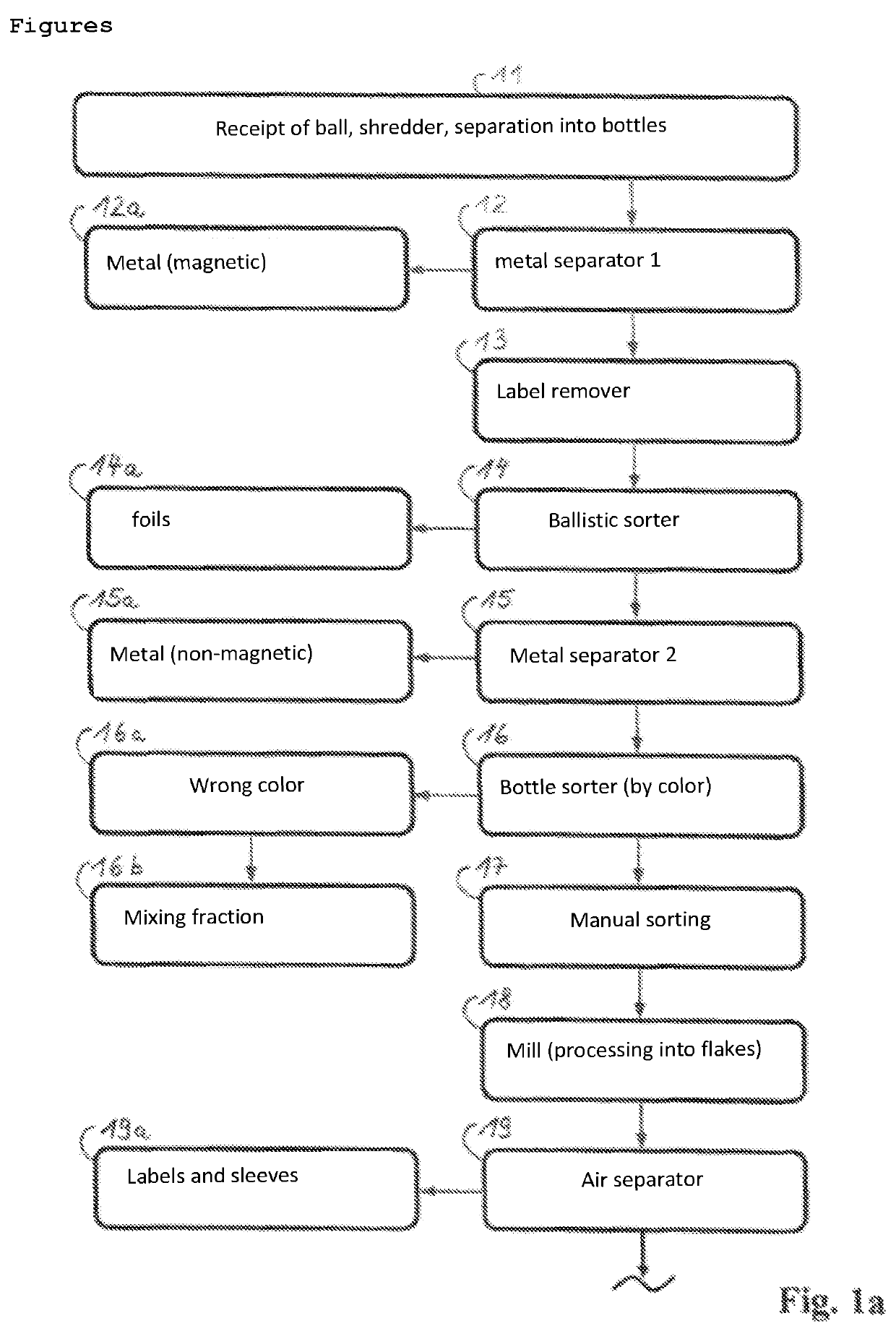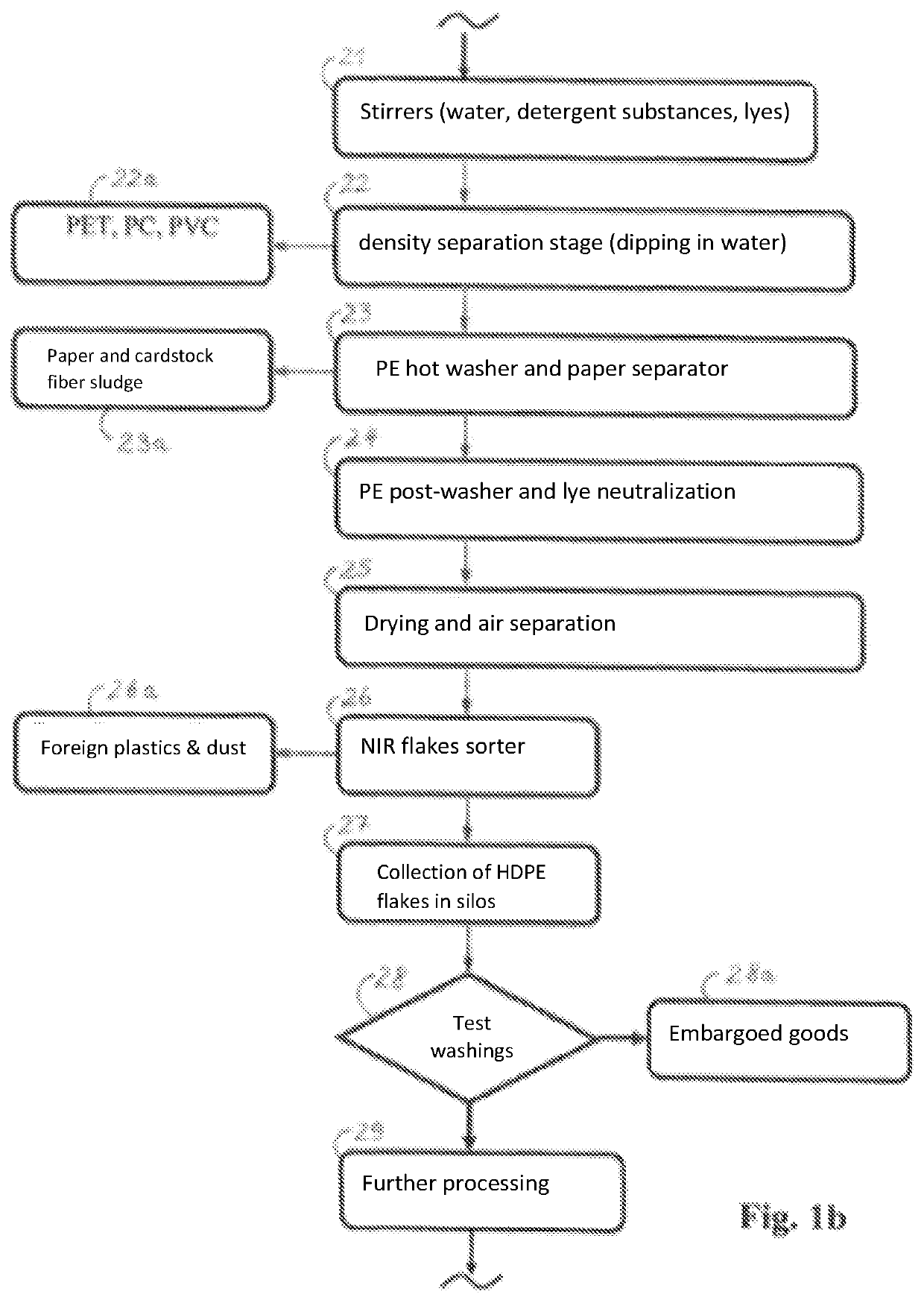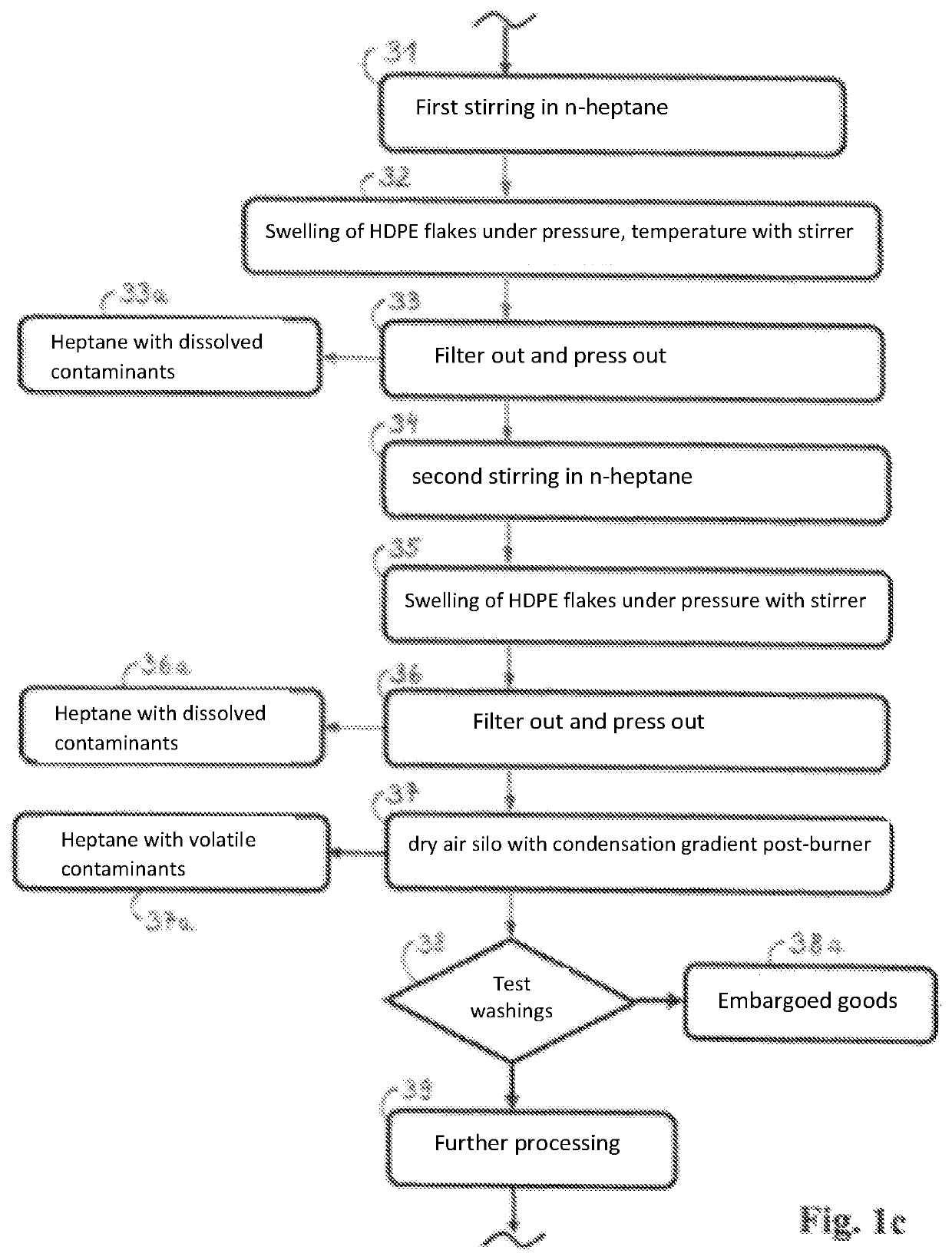System and process for recycling contaminated polyolefins
a polyolefin and polymer technology, applied in dental splints, dental prostheses, medical science, etc., can solve the problems of poor recycling rate, and significant reduction of reuse ra
- Summary
- Abstract
- Description
- Claims
- Application Information
AI Technical Summary
Benefits of technology
Problems solved by technology
Method used
Image
Examples
Embodiment Construction
[0094]The invention is described in the following in an exemplary manner by means of the figures.
[0095]FIGS. 1a to 1d depict the sequence of a recycling process. The process in essence consists of 4 parts:
[0096]In a first part (shown in FIG. 1a), the polyolefin is sorted and then comminuted.
[0097]In a second part (shown in FIG. 1b), the comminuted polyolefin material is washed, dried and if necessary sorted once more.
[0098]In a third part (shown in FIG. 1c), contaminants from the washed and dried polyolefin material are removed, in that it is swollen by means of a solvent, with the contaminants present in the polyolefin material being dissolved in the solvent. Then the solvent and the contaminants dissolved therein are separated from the polyolefin material, first mechanically, and then the solvent residues are removed in a drier.
[0099]In a fourth part (shown in FIG. 1d), the polyolefin material, after passing through an optional additional step, is extruded in molten form, granulat...
PUM
| Property | Measurement | Unit |
|---|---|---|
| pressure | aaaaa | aaaaa |
| pressure | aaaaa | aaaaa |
| temperature | aaaaa | aaaaa |
Abstract
Description
Claims
Application Information
 Login to View More
Login to View More - R&D
- Intellectual Property
- Life Sciences
- Materials
- Tech Scout
- Unparalleled Data Quality
- Higher Quality Content
- 60% Fewer Hallucinations
Browse by: Latest US Patents, China's latest patents, Technical Efficacy Thesaurus, Application Domain, Technology Topic, Popular Technical Reports.
© 2025 PatSnap. All rights reserved.Legal|Privacy policy|Modern Slavery Act Transparency Statement|Sitemap|About US| Contact US: help@patsnap.com



